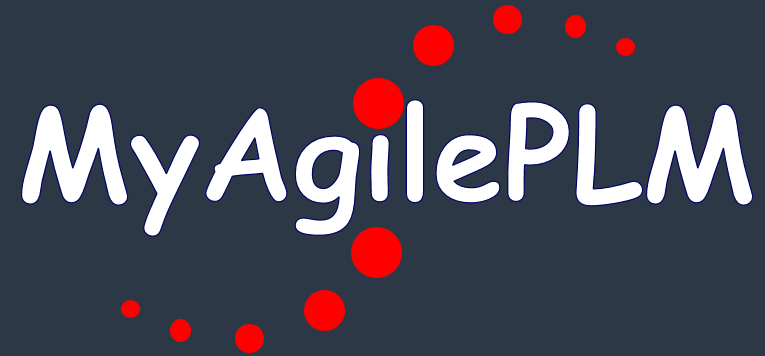
Has your business fully adopted cloud-based CAD? While the technology has been around for more than a decade, the jury is still out and it looks like many engineers and businesses are still unsure of cloud CAD benefits. In this blog post, we’ll take a look at what we’ve learned from 10 years of cloud CAD development. We’ll also explore how you can benefit from this innovative technology. So, if you’re curious about the future of CAD, read on!
Death Of Solidworks?
Time is running really fast. Next month, we will mark 10 years from the SWW2012 event where Solidworks announced their plans to develop what was called Solidworks V6 or cloud version of Solidworks. Check my article –Cloud CAD and implication for PLM I wrote after SWW2012. The article has links to some historical posts from Solidworks and others that can bring you back to that time. Unfortunately, some of the article links are dead (it was a long time), but you can still see some of them
If you want to see how Solidworks cloud will look…
My attention was caught by Matt Lombard upFront.eZine article What Remains To Be Solved in MCAD. Check this out. There is a note about cloud and CAD there. He speaks about several topics related to cloud CAD – (1) application delivery and storage (2) CAD in database. Here is the passage:
Application Delivery and Data Storage Options. First, decentralize CAD from mainframes to personal computers. Then, centralizing CAD back to cloud servers. CAD in a database. Much data these days is kept in a database format; it makes sense, as it provides built-in data management and turns the idea of file management on its head.
Cloud. I think there was an assumption that cloud computing was going to be embraced in the same way that PC CAD was embraced in the 1990s. But it hasn’t. Clearly, it works for some people, but not for everyone.
It made me think about what did we learn for the last 10 years, new tech and products that happened for that period, and what can happen next.
A Decade of Cloud CAD Learning
Cloud CAD, browser-based CAD, cloud-enabled CAD systems, hosted CAD – these are names you can hear when the conversations come to cloud and CAD. There are some differences in technological approaches that can make one of them different, but fundamentally the main focus of all these products is about how to make CAD systems available anywhere and leverage new cloud and web technologies to improve design workflows and collaborations. At this point, I think we are past the battles about what is the right approach. Check Jon Hirschtick and Carl Bass are in agreement about the future of CAD and Onshape and Autodesk Disagree about Cloud Technology and Focus.
In my view, marketing debates about Cloud and CAD are also in history, especially debates about “cloud and online” like we remember in the past:
The latest interview with Gian Paolo Bassi proposed an interesting clarification of terms between “cloud” and “online”. During discussions of the Online Edition, SolidWorks executives were careful to avoid the term cloud. “A lot of people flap their mouths with ‘cloud, cloud, cloud,’” scoffed Bassi. “We don’t need to fill up our mouth with big words.” “Cloud” starts whenever you have some part of your workflow, your data creation, outside your desktop, he clarified. “We don’t believe that cloud means you run everything in the browser.” According to Peter Rucinski, director of product portfolio management for SolidWorks desktop products, not many customers are asking for “CAD in the cloud” in particular, but they are asking for flexibility. “They are asking for any time, anywhere … and SolidWorks Online gives you that flexibility,” he said.
Almost all CAD vendors today provide an option to have their CAD systems available remotely in one or another way. Each vendor does it in its own way. We can see great browser-based technology developed by Onshape, a hybrid approach Autodesk Fusion 360, multiple options both browser and hybrid by Dassault Systemes, and a fully hosted approach offered by Siemens NX and Solid Edge. None of them are dominant – each product has its group of users and development trajectory. None of the new products made a “market grab” like Solidworks made by introducing a PC-based MCAD system in 1995. However, some of these processes are purely generational. I watched my son uses Onshape as part of his freshmen engineering course in high school and I can see how the “google doc like” approach is much appealing to his mind compared to a file-based one.
Digital Transformation and Next Steps
Some thoughts about what can happen next. For the last 2 years, COVID19 became the most powerful digital transformation force in the world. Remote work is a reality and we are not going back in this journey. And the transformation came to CAD software as well. Companies are desperately looking at how to switch to cloud services and how SaaS providers can transform an entire product development process to make it work for new business conditions. Industry experts are in full agreement that SaaS applications will transform the industry making computer-aided design software and third part tools available anywhere. The product design process should not be limited to specific hardware and should happen anywhere – on desktops, mobile devices, online, and remotely.
A business model is transforming as well. Most vendors are moving to the SaaS model and switching to the subscription model to make their tools available on demand. The technology is here, the security is not a showstopper anymore and 3D CAD software is on the move to support a broader scope of digital transformation processes in manufacturing organizations. A mobile device is now more popular than a desktop and the focus is switching from “tools” to “data”. It is more important to have data access anywhere anytime rather than focus on how to get access to a specific application. Therefore CAD and PLM platform providers are switching to a platform approach, which put the data in the center moving away from the previous application approach.
What is my conclusion?
The industry learned a lot for the last 10 years developing “cloud CAD” technologies. At this point, I think cloud CAD development is part of a much bigger and broader digital transformation that we are going through as individuals, companies, and a whole industry. Cloud CAD systems didn’t kill existing products but introduced a new approach that is gaining adoption. The adoption process was accelerated by the COVID event and the trajectory towards the digital transformation of organizations and SaaS tools is clear. But the change won’t be overnight. To give you an idea of what it can look like, think about 2D to 3D transformation (back in the 1990s, it was suggested that we are done with 2D) and digital transformation of the car driving process taking us from paper maps in the 1990s to mobile applications such as Waze and Google Map in 2010s and augmented navigation systems and auto-pilots we are going to see in most of the cars during 2020s. Watch 3 most important trends to predict where the industry will be going with cloud design tools – (1) data; (2) SaaS applications; (3) intelligence. These three trends will shape the future of modern engineering and manufacturing applications and they will absorb whatever we called “Cloud CAD” in the past. Just my thoughts…
Best, Oleg
Disclaimer: I’m co-founder and CEO of OpenBOM developing a digital network-based platform that manages product data and connects manufacturers, construction companies, and their supply chain networks. My opinion can be unintentionally biased.
The post What Did We Learn From 10 Years of Cloud CAD Development? appeared first on Beyond PLM (Product Lifecycle Management) Blog.



Be the first to post a comment.